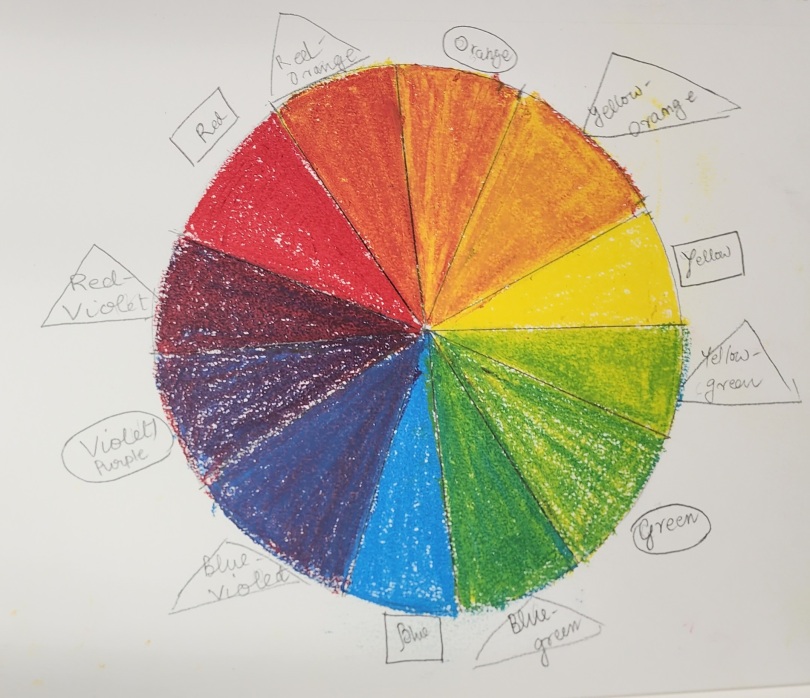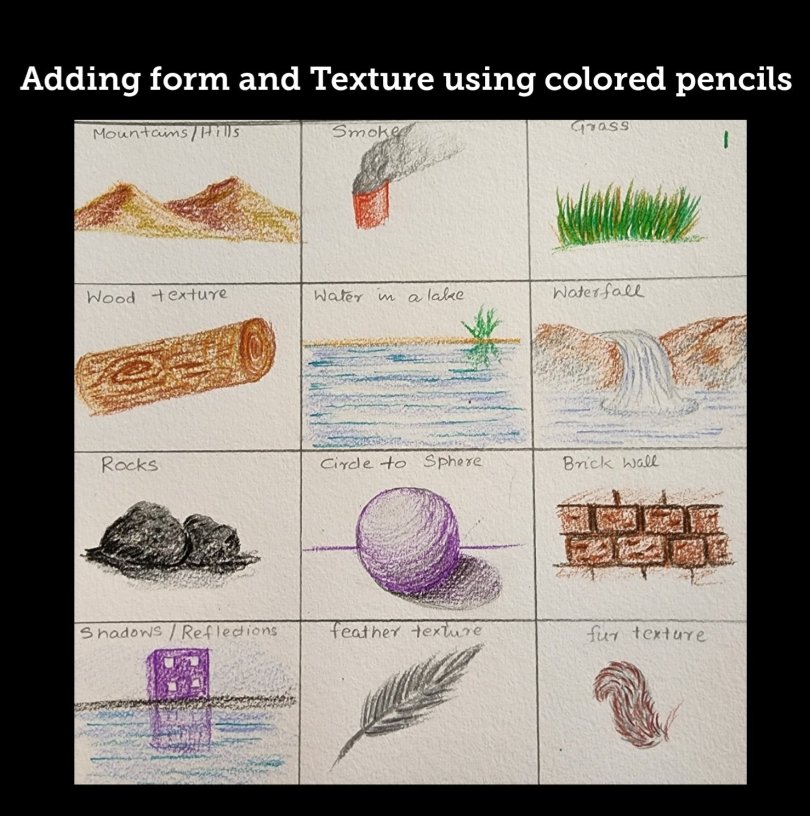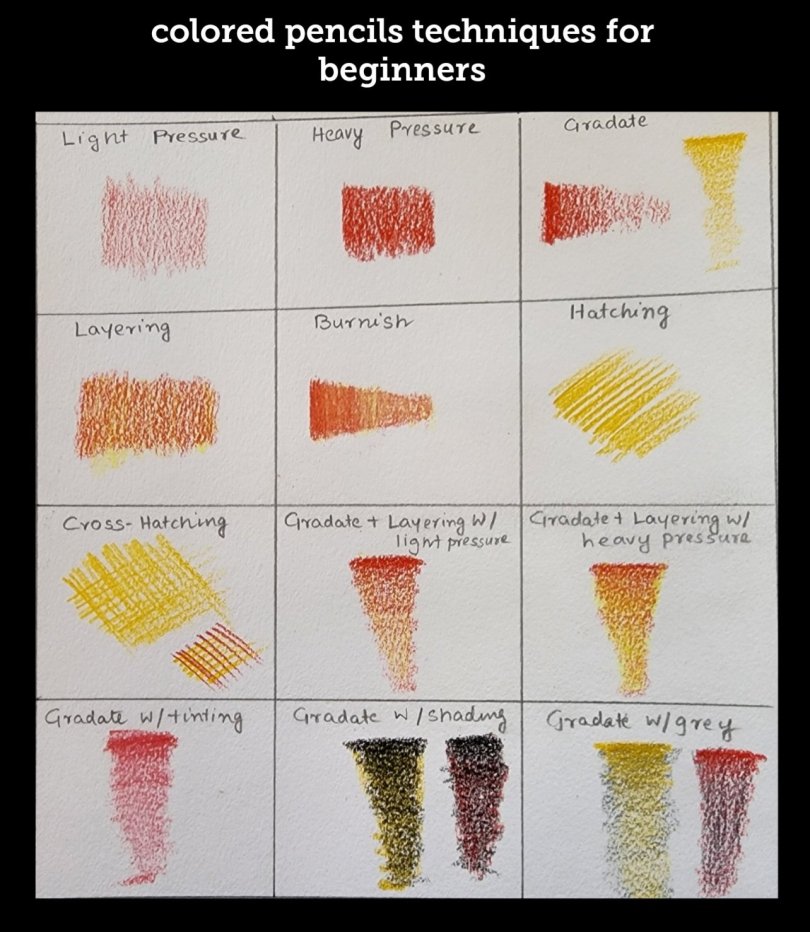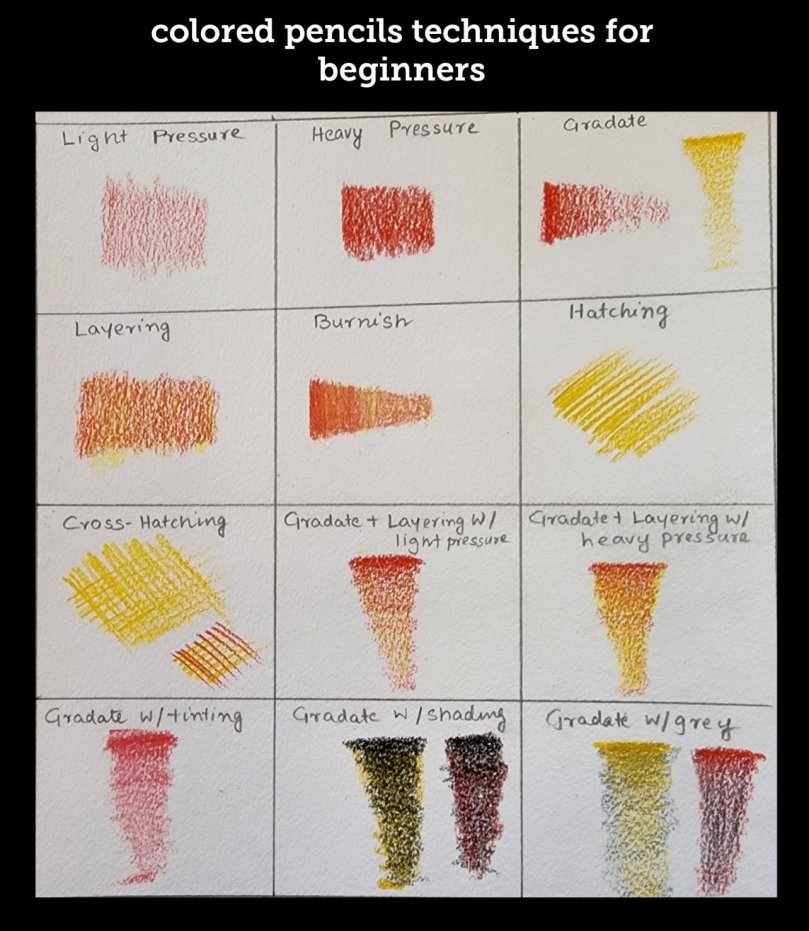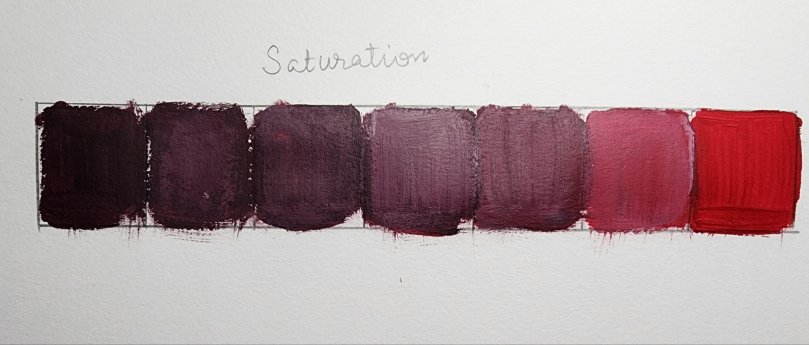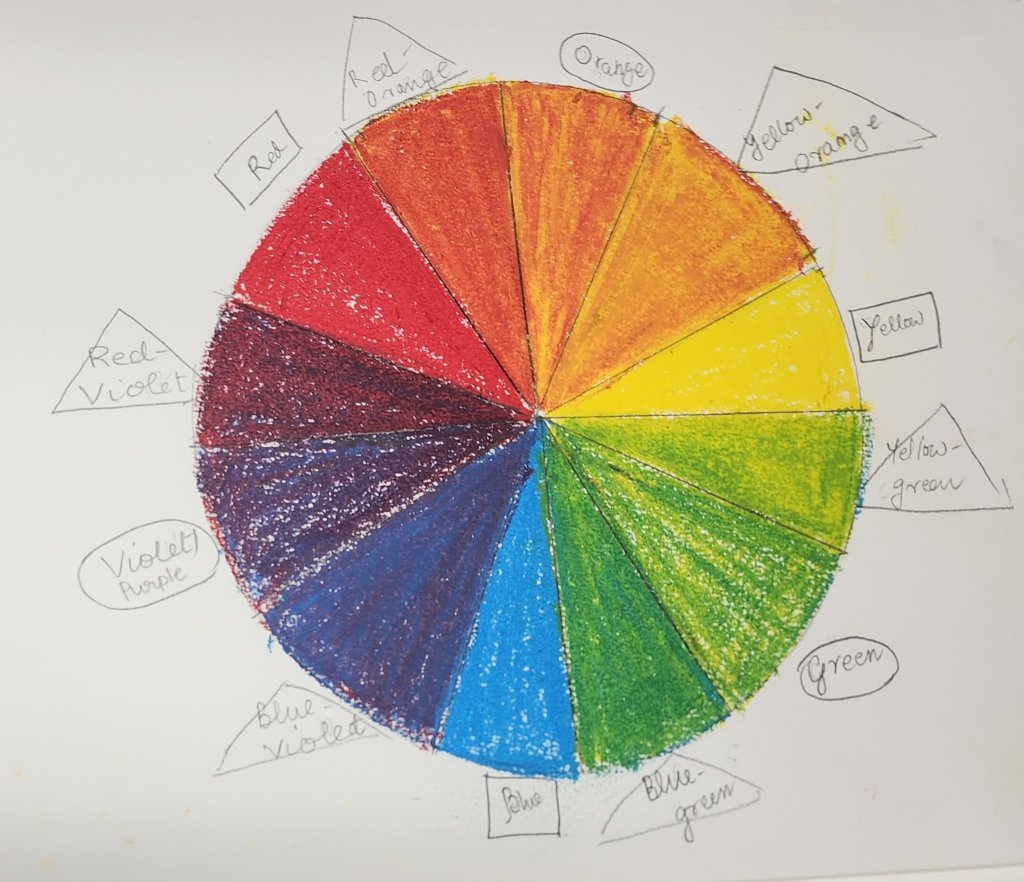
In this lesson, we will learn to make a Color wheel with Primary, Secondary, and Tertiary colors. We will also learn about the Complementary and analogous Color groups as they play an important role in deciding your art composition.
Let’s first start by understanding Primary, Secondary, and Tertiary colors. We will use three colors from our color pencil set to understand our terms-Red, Yellow, and Blue. First, to create a color wheel template we will divide a circle into 12 parts( 12 triangles).
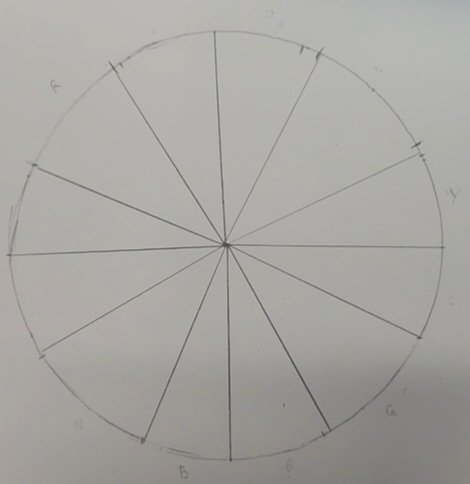
Primary Colors- Primary colors are the most important in a painter’s palette because these are hues that cannot be created or derived by mixing other colors. The Primary colors in a color wheel are Red, Yellow, and Blue. If you have these three colors you can mix them in different amounts to create different colors.
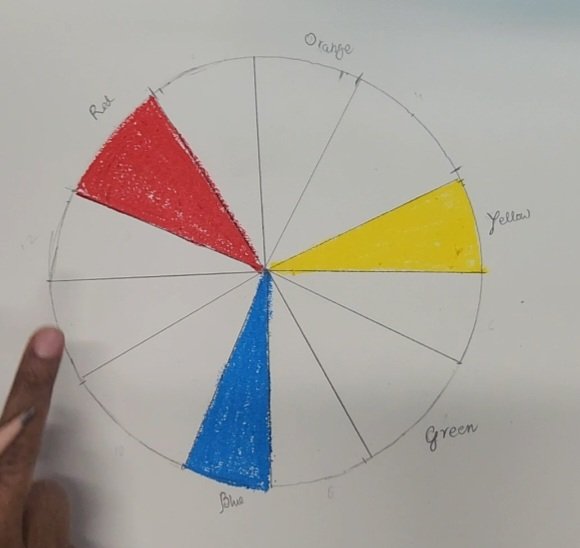
Secondary Colors-Secondary Colors are colors that can be created by mixing equal amounts of two Primary colors. Red+Yellow=ORANGE, Yellow+Blue=GREEN, and Blue+Red=PURPLE are the three Secondary Colors on the Color wheel.
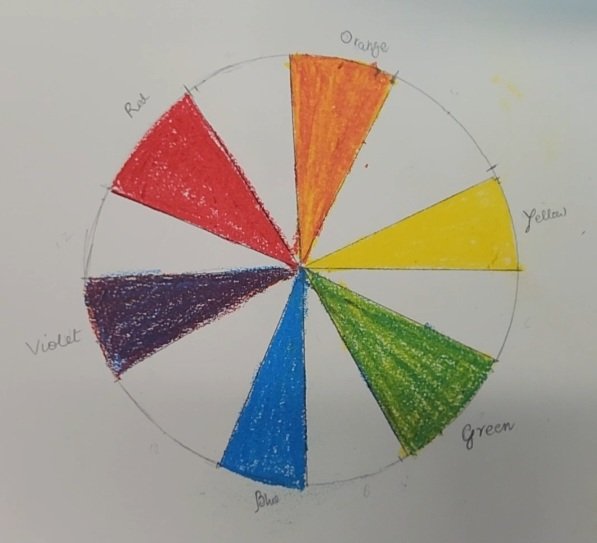
Tertiary Colors-Tertiary colors are created by mixing equal amounts of Primary color with a secondary color. Red+Orange=RED-ORANGE, Blue+Orange=BLUE-ORANGE, Blue+Green =BLUE-GREEN, Yellow+Green=YELLOW-GREEN, Yellow+Orange=YELLOW-ORANGE, and Red+Purple=RED-PURPLE are the six Tertiary colors.
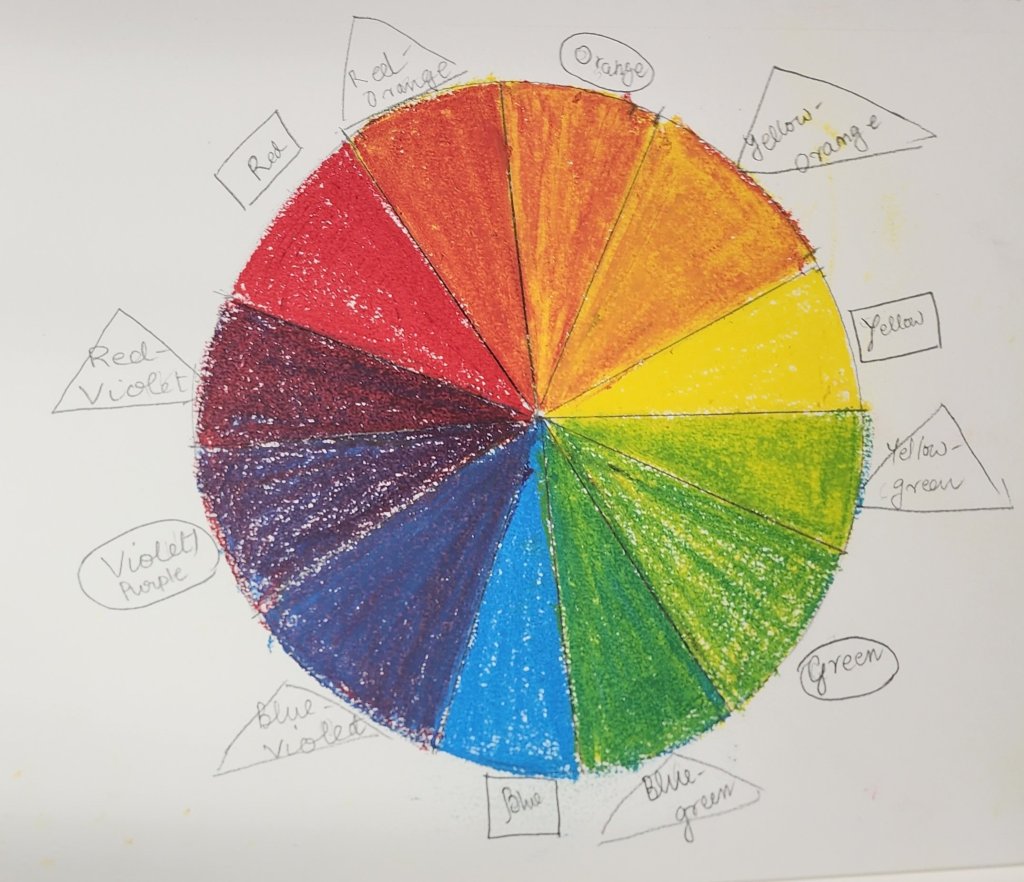
Next, let’s talk about Complementary and Analogous colors.
Complementary colors are colors that are on opposite sides of the color wheel.
Analogous colors are a set of three colors that are next to each other on the color wheel usually a primary color and a secondary and tertiary color that sits right next to it.
Complementary color schemes create a highly contrasting composition, whereas analogous color scheme creates a composition with low contrast.
Color temperature is also another aspect where simply by looking at the colors we have a sense of warmth or cold. For example, when you look at the colors Red, Orange or Yellow you sense the hot sun, making these warm colors. Similarly, when you look at blue or green you might have a feeling of a cool sea breeze or cool grass which makes these Cool Colors. So when you have different hues, the hue which has more of the warm colors mixed will feel warmer and vice-versa. So a hue of violet or purple will feel more toward the warm spectrum if it has more red, whereas if it has more blue in it it will feel cooler.
Watch this video step-by-step to learn to make an easy color wheel using oil pastels
The colors being mixed with white, black, and grey also create different Hues, tints, shades, and saturation. To learn more about this, please refer to the previous post-https://nishasartforkids.com/2022/11/04/what-is-color-lesson-1-in-color-element-of-art/

